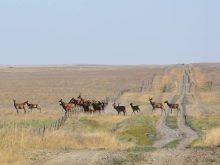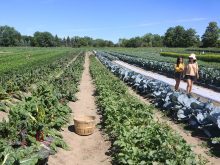CALGARY — Unlocking the potential of lentils and fababeans to sustainably boost the bottom line for prairie farmers is the goal of a scientist who has been appointed an Agri-Food Innovation Fund Chair at the University of Saskatchewan.
Pulses have been consumed by people for millennia, said Ana Vargas, who will head the university’s lentil and fababean breeding program. Plus, new markets are opening in North America for untraditional uses of such crops that go beyond the increasing trend of fractionation and protein extraction for value-added food products, she said.
Read Also

Canada told trade crisis solutions in its hands
Canadians and Canadian exporters need to accept that the old rules of trade are over, and open access to the U.S. market may also be over, says the chief financial correspondent for CTV News.
Related stories:
- Fababean fractionation plant to produce protein in Alta.
- Fababeans may catch the fractionation wave
- Pulse sector unfazed as lentil ban demanded in India
- Lentils have provided prairie cooks with new kitchen repertoire
“In things we didn’t imagine before, like fabas, we can grow faba plants as an ornamental crop (for their flowers). We can eat fresh shoots of faba. I was actually seeing some of those in Seattle a few months ago, and I was truly impressed how much money people are willing to pay for those.”
Vargas will lead the lentil and fababean breeding program at the university’s Crop Development Centre in the College of Agriculture and Bioresources starting Jan. 2. She earned her PhD in plant breeding and genetics there in 2021 after receiving a master’s degree in agronomy from the University of Puerto Rico.
She is excited about pulse crops for their natural ability to fix nitrogen and use less chemical fertilizer. Along with their high protein content for plant-based food products, this means they fit in well with increasing societal pressures to make agriculture more sustainable.
“Fabas are probably the best nitrogen fixer we have available for growing in Western Canada,” she said.
“Soybeans also fix an insane amount of nitrogen, but that’s a bit of a different story. But fabas can fix up to 200 kilograms per hectare of nitrogen compared to lentils, which is about 40 — the best we can get from lentils and peas, so I would say that’s a really nice story there.”
That said, fababeans need a lot of water, which means irrigated land in the Canadian Prairies, she said.
Vargas plans to look into genetic improvements that will lead to plants with a root architecture that allows them to be grown in drier areas, boosting the crop’s tolerance to stresses such as drought.
Farmers have also asked her to breed lentils that are taller.
“I guess the main reason is because lentils are such a tiny plant. When they combine, you only have, what like eight centimetres for moisture retention for your next cycle, so we’ve been thinking about it, and I do think that having the ability to increase that in lentils will come again from modifying the root architecture.”
About 80 percent of the roots are within the top layer of the soil, which means lentils have a very shallow root system, said Vargas. “So, if we have the ability to come with a root that goes deeper, we will have the ability to put a bigger, taller plant on top.”


















